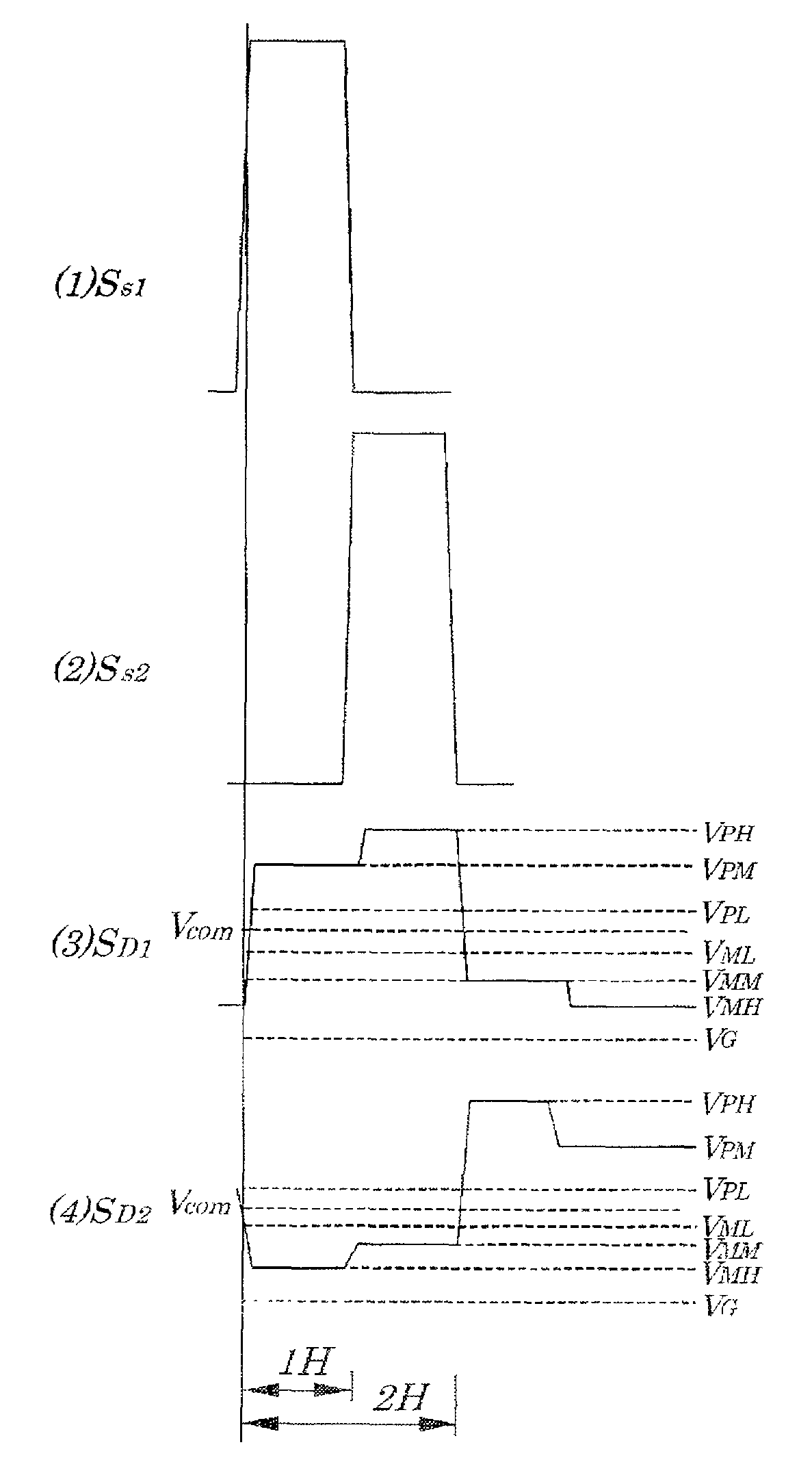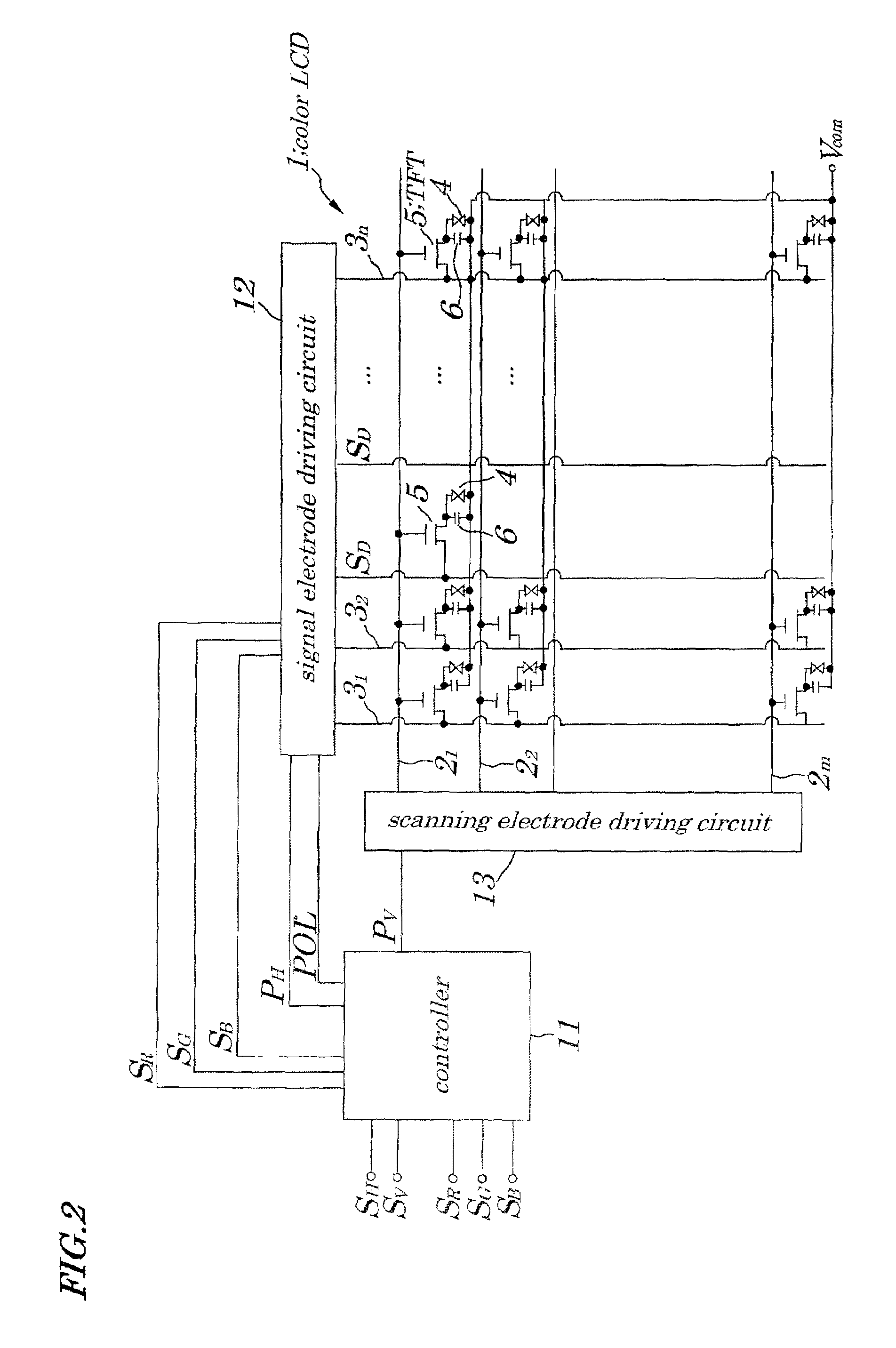Method and circuit for driving liquid crystal display and image display device
a liquid crystal display and image display technology, applied in the direction of electric digital data processing, instruments, computing, etc., can solve the problems of over-the-counter technology of the first conventional example, unbalance is produced between, flicker cannot be reduced, etc., to reduce flicker, reduce costs, and minimize flicker. effect of lin
- Summary
- Abstract
- Description
- Claims
- Application Information
AI Technical Summary
Benefits of technology
Problems solved by technology
Method used
Image
Examples
embodiment
[0063]FIG. 1 is a timing chart explaining a method for driving a color LCD 1 according to an embodiment of the present invention. FIG. 2 is a schematic block diagram showing configurations of a driving circuit for the color LCD 1 according to the embodiment of the present invention. The color LCD 1 shown in FIG. 2 is an active-matrix color LCD using, for example, a TFT (Thin Film Transistor) constructed of amorphous silicon as a switching element. In the above color LCD 1, each of pixel portions is mounted at an intersection of each of “m” (m is a natural number) pieces of scanning electrodes (gate lines) 21 to 2m placed at specified intervals in a row direction and each of “n” (n is a natural number) pieces of signal electrodes (source lines) 31 to 3n placed at specified intervals in a column direction. Moreover, in each pixel portion, a liquid crystal cell 4 being equivalently a capacitive load, a TFT 5 whose drain is connected to one terminal of a corresponding liquid crystal cel...
PUM
 Login to View More
Login to View More Abstract
Description
Claims
Application Information
 Login to View More
Login to View More - R&D
- Intellectual Property
- Life Sciences
- Materials
- Tech Scout
- Unparalleled Data Quality
- Higher Quality Content
- 60% Fewer Hallucinations
Browse by: Latest US Patents, China's latest patents, Technical Efficacy Thesaurus, Application Domain, Technology Topic, Popular Technical Reports.
© 2025 PatSnap. All rights reserved.Legal|Privacy policy|Modern Slavery Act Transparency Statement|Sitemap|About US| Contact US: help@patsnap.com



